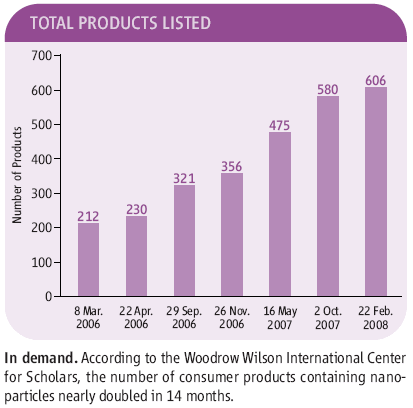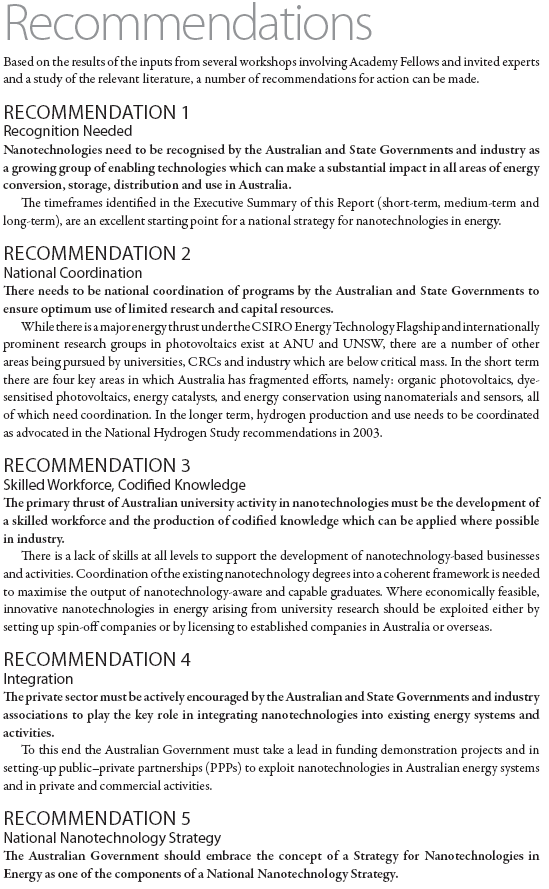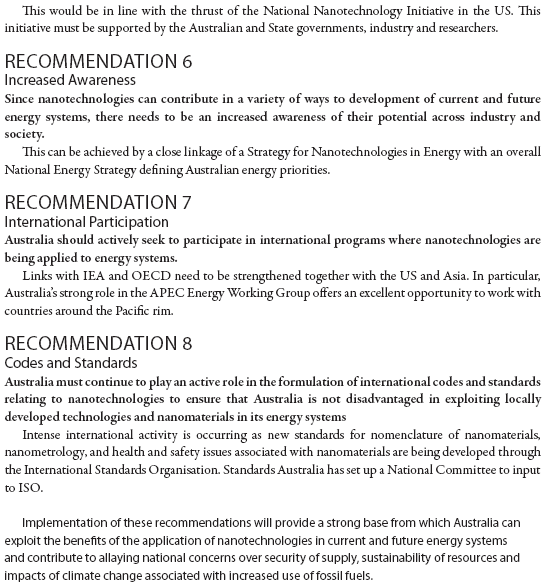|
|
|
|
|
|
|
News & Views item - September 2008 |
![]() Senator Carr, Science and Nanotechnology. (September, 16, 2008)
Senator Carr, Science and Nanotechnology. (September, 16, 2008)
Although it received next to no coverage in the popular media, the Minister for
Innovation, Industry, Science and Research, Kim Carr, gave a short address when
last week
he launched the Australian Association of Technological Sciences and Engineering's
(ATSE) report on
Energy and Nanotechnologies: Strategy for Australia's Future![]() .
.
The report identifies areas for particular attention in Australia in the application of nanotechnologies to energy systems, and discusses these areas in terms of short-term, medium-term and long-term realisation as:
short-term (less than five years) – energy
conservation; environmental management; catalysts for
combustion; photovoltaic cells.
medium-term (5-15 years) – catalysts for
conversion of biomass, gas and coal; fuel cells; advanced
photovoltaics using engineered nanomaterials.
long-term (greater than 15 years) – hydrogen production; hydrogen storage and use.
Senator Carr told his audience at Monash
University: Australians... recognise just how important science is to
improving our quality of life, raising our standard of living, and solving the
many problems that confront us.
So do I.
My own faith in the capacity of science to meet human needs and fulfil human
aspirations is unshakeable.
Then turning to the ATSE report he said: [The report]is a credit to the Australian Academy of Technological Sciences and Engineering, which has been promoting the creation and practical application of new knowledge for over thirty years... [and] as the report points out, we need more coordination and collaboration if we are to make the most of our limited research resources.
[and with the winding up of the] National Biotechnology Strategy in June this year, [t]his clears the way for the development of a comprehensive strategy for enabling technologies - not just nanotech and biotech, but ICT and any others that may emerge in the future.
Policy clarity is essential if we are to create favourable conditions for emerging technologies - as the Cutler Report recommends we should.
We [the Labor government] are particularly keen to support the use of nanotechnology to produce clean energy.
[The report] recommends that: "Australia
should actively seek to participate in international programs where
nanotechnologies are being applied to energy systems."
This is spot on... I've made a priority of giving an international
dimension to everything we do - whether through the Australian Research Council,
the CSIRO, or my own Department... and [w]hatever the challenge, I think we have
to give equal attention to what we can achieve immediately and what we can
achieve over time.
Whether these words of support translate into the useful provision of increased resources both for research as well as development and innovation is problematical, but if Senator Carr is taken at his word, he would appear to believe in being a champion.

Credit: Science -- Source: The Project on Emerging Nanotechnologies
The eight recommendations presented in the report are listed below but here we focus for a moment on a matter which doesn't directly relate to nanotechnology and energy production -- the question of health and safety in the use of materials of nano-dimensions. The ATSE report points out: "Intense international activity is occurring as new standards for... health and safety issues associated with nanomaterials are being developed through the International Standards Organisation. Standards Australia has set up a National Committee to input to ISO."
Robert Service in the August 22, 2008 issue of Science asks: Can High-Speed Tests Sort Out Which Nanomaterials Are Safe?
He concludes: "Taken together, the early studies suggest that high-throughput assays could vastly speed up toxicological screening, Weissleder [Ralph Weissleder, a molecular imaging expert at Harvard Medical School] and others say. They can't do everything, Houck [Keith Houck, an EPA toxicologist] cautions: 'In vitro assays won't ever replicate a whole body.' Still, if they can begin to sort out which types of nanoparticles pose the biggest risk, they could encourage targeted testing of those compounds and thereby help shore up faith in nanotechnology's future."

